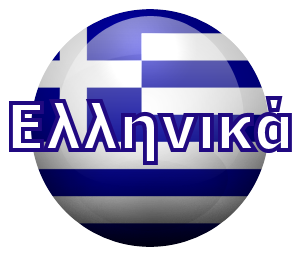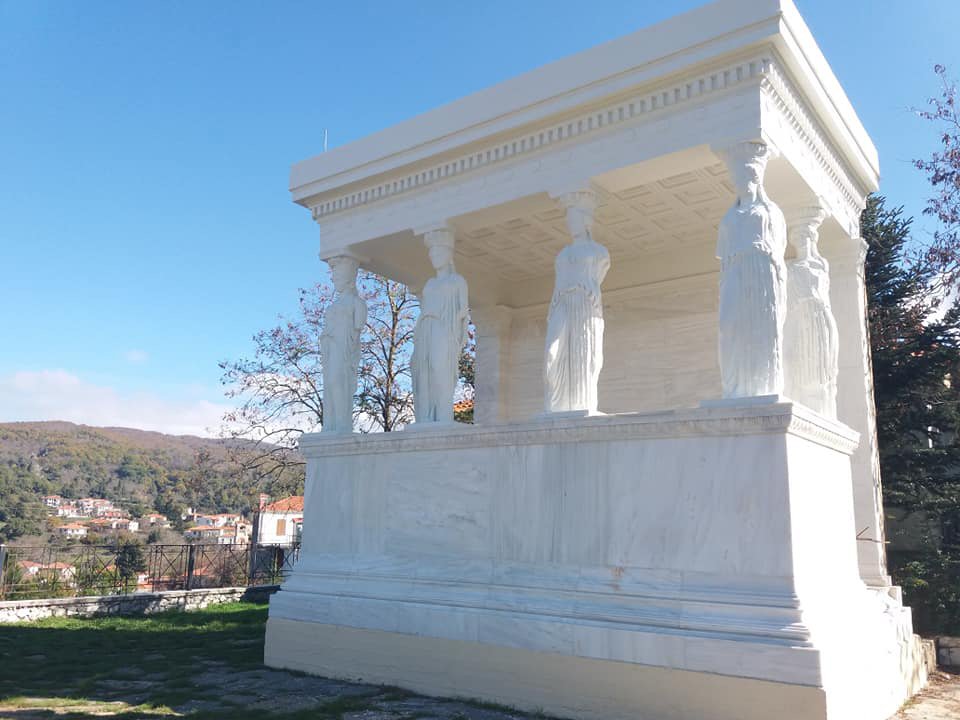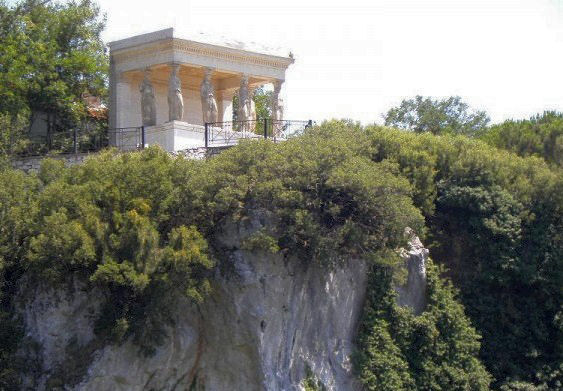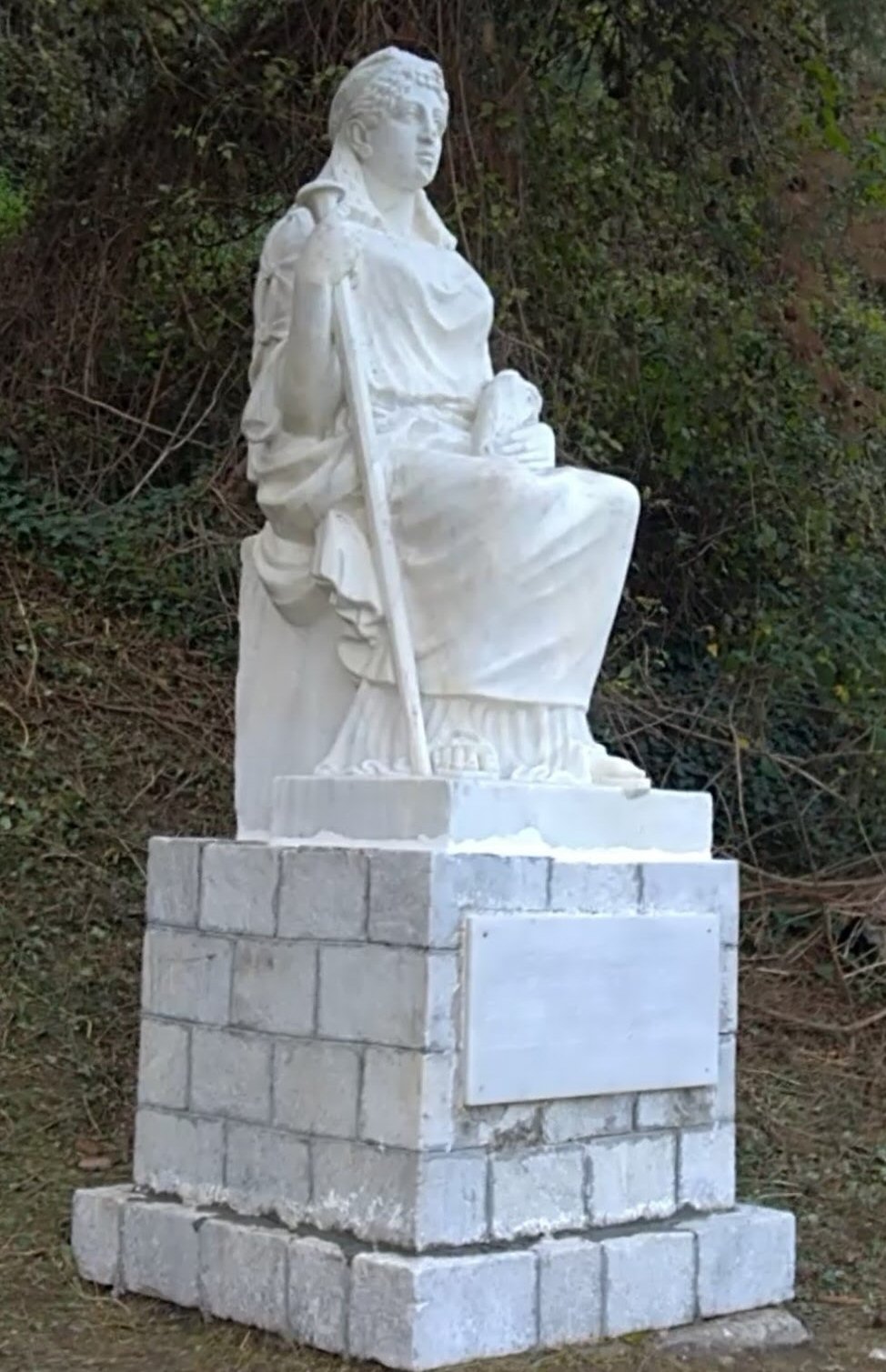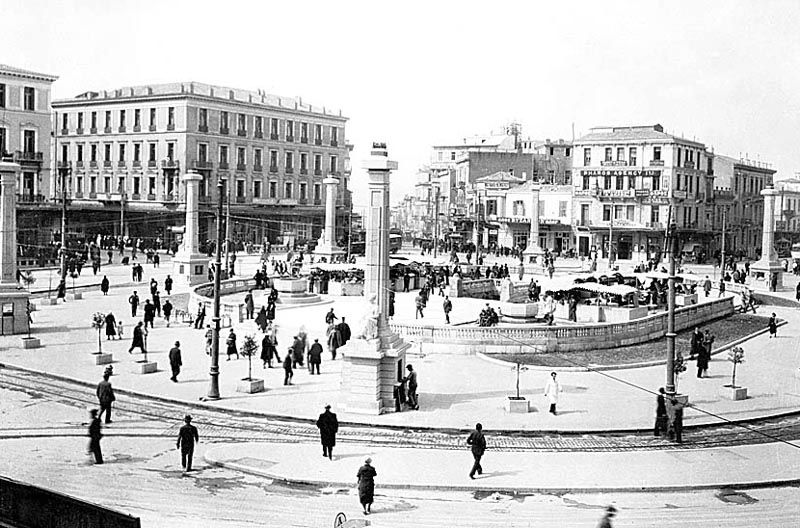Caryatids Monument
Historic facts
According to historians, the Caryatids Monument is located on the ancient acropolis of Karyes and it is an exact copy of a section of Erechtheion's dome at Athens' Acropolis. It was founded in 1983 with the expense of many donors and the initiative of "Karyates Association". Today, it is a symbol for present Karyes marking the connection between the present time and the glorious past of the region.
Location & Access
The Caryatids Monument is located on the left side of the settlement and from its privileged location the visitor enjoys the view of the northern site of the upper settlement, the location of ancient Karyes and the plateau of “Pinigoura”. The monument can be accessed from the central square, where someone can find signs directing to the spot.
The Caryatids
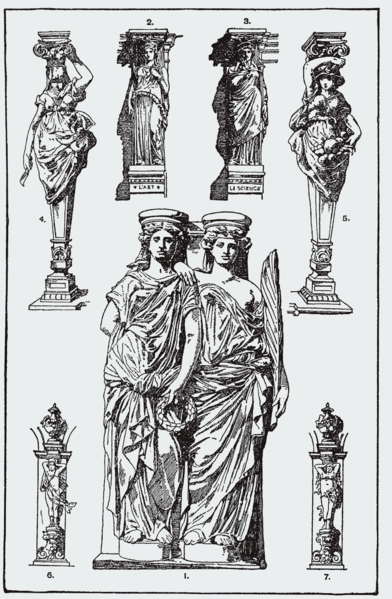 The Caryatids (means young girls from Karyes), were priestesses virgins who danced a worship dance every year at "Karyateia", a fest dedicated to goddess Artemis the Caryatid. This worship dance Caryatis was "epichorios" (means local), it wasn't danced elsewhere and it was considered to be difficult(1). The verb "Caryatizo" means dance the dance of Caryatis or dance honoring Caryatid Artemis. Loukianos(2) wrote:
The Caryatids (means young girls from Karyes), were priestesses virgins who danced a worship dance every year at "Karyateia", a fest dedicated to goddess Artemis the Caryatid. This worship dance Caryatis was "epichorios" (means local), it wasn't danced elsewhere and it was considered to be difficult(1). The verb "Caryatizo" means dance the dance of Caryatis or dance honoring Caryatid Artemis. Loukianos(2) wrote:
"Lakedemomioi men aristoi Ellinon einai dokountes para Polydeykous kai Kastoros karyatizein mathontes... apanta meta mousikis poiousin arxi tou polemein pros avlon kai rythmon",
meaning that:
"the Lakedemons, considered to be best of Greeks, after learned how to dance the dance of Caryatis from Polydeykis and Castor.. they are doing everything with music, even war, with the accompaniment of the flute and rhythm".
When later on other girls from Lakonia took part in this dance, they were named also Caryatids, i.e. girls dancing the dance at the fest of Caryatid Artemis. The Caryatids were famous for their body and artistic and harmonious dance, so that all female figures, especially in sculpture, where named Caryatids. In architechture, they are sculptures with female figure and they are used as columns in building support or decorative brace in gates, facades, cornices, friezes, roofs etc.
Source: Κ.Μ. Pitsios (1948), Karyaí (Aráchova) Lakedaímonos, Historical, Cultural Study
______________________________
(1) Prv. Polyd., "Peri eidon orhiseos" IV, 104
(2) "Peri orhiseos", 10
Statues of Gods of Hestia and Demeter
The Goddess Hestia
At the entrance of the settlement of Karyes, there is the statue of the Goddess Hestia, the protector of the household. According to Greek mythology, Hestia is the older daughter of Rhea and Kronus, sister of Zeus, Hera, Poseidon and Demeter. She is the goddess of home, home life and family, who took the first offer in every sacrifice that took place in a home and had no public worship.
The statue depicts the goddess holding the fire, a symbol of the fireplace in a home.
The Goddess Demeter
Right next to the Deiros River Bridge is the statue of Goddess Demeter. Demeter, in Greek mythology, was an ideal anthropomorphic deity of cultivation, agriculture, as well as free vegetation, soil and fertility, the consequence of which she was to be considered a protector of marriage and motherhood. It was an Olympian goddess. She was the daughter of Kronus and Rhea. Sister of Hera, Hestia, Zeus and Poseidon.
The statue depicts the goddess holds in her arms a bunch of ears, symbol of agriculture.
Historical facts of Gods-Muses Statues
These two statues of female goddesses were donated by the City of Athens to the Community of Karyes in a "reward" of the offering of the statues of the Caryatids in the Temple of Erechtheion on the Acropolis. They were moved on the initiative of compatriot Epaminondas Kastanas and were placed on the main road at the entrance of the settlement. These are two of the statues that adorned Omonia square in Athens during the interwar period. Due to the construction of the underground railway and the required ventilation of the space, the Omonoia Square was reformed in those years. Then, It was decided to build statues for their placement on the ventilations of the underground station.
The contract for the construction of decorative statues was finally assigned to the Association of Greek Sculptures and included twelve statues of white cement, which would depict the three Muses and the nine Graces, and two of Pentelic marble depicting the goddesses Hestia and Demeter. The sculptures were handed over to the Municipality in 1932, but eventually the mayor of Athens, Spyros Mercouris, placed only eight of them, as a result of the modification of the original plan of the square. The rest were transferred to the Municipality's warehouses. From the square they were finally withdrawn in 1937, when the site of the mayoralty of Konstantinos Kotzias was reformed due to a public outcry. Some of these sculptures decorate today Karditsa, Thebes, two in Amorgos and two in Karyes of Laconia.
Omonoia Square in Athens with the Mousses statues
For many years, it was considered that both statues in Karyes were two of the nine Muses, but after the works of their repairing by a specialized workshop in September 2018, the person responsible for the works, Mr. Tzamalis, concluded that the statues in Karyes are the goddesses Estia and Dimitra. Specifically, the statue at the entrance of the Karyes, which holds a fire, is the goddess Hestia, while the statue after the bridge, which holds the ears, is the goddess Demeter.
Also, Mr. Tzamalis argues that the Muses of Omonoia were made by concrete as those placed in Karditsa, which he had seen in the past, but the statues in Karyes are made of marble, as were the two marble statues of Estia and Demeter.


